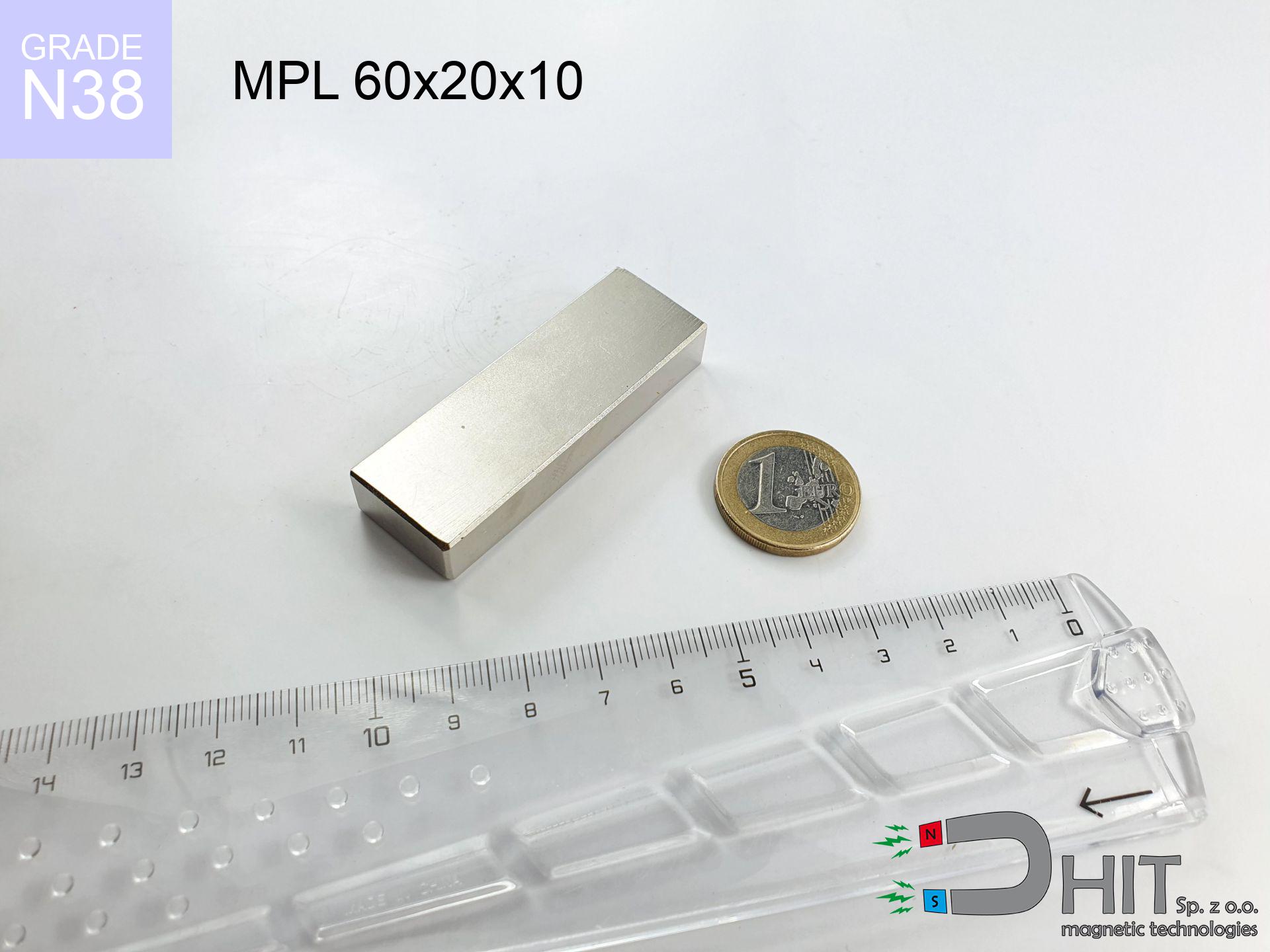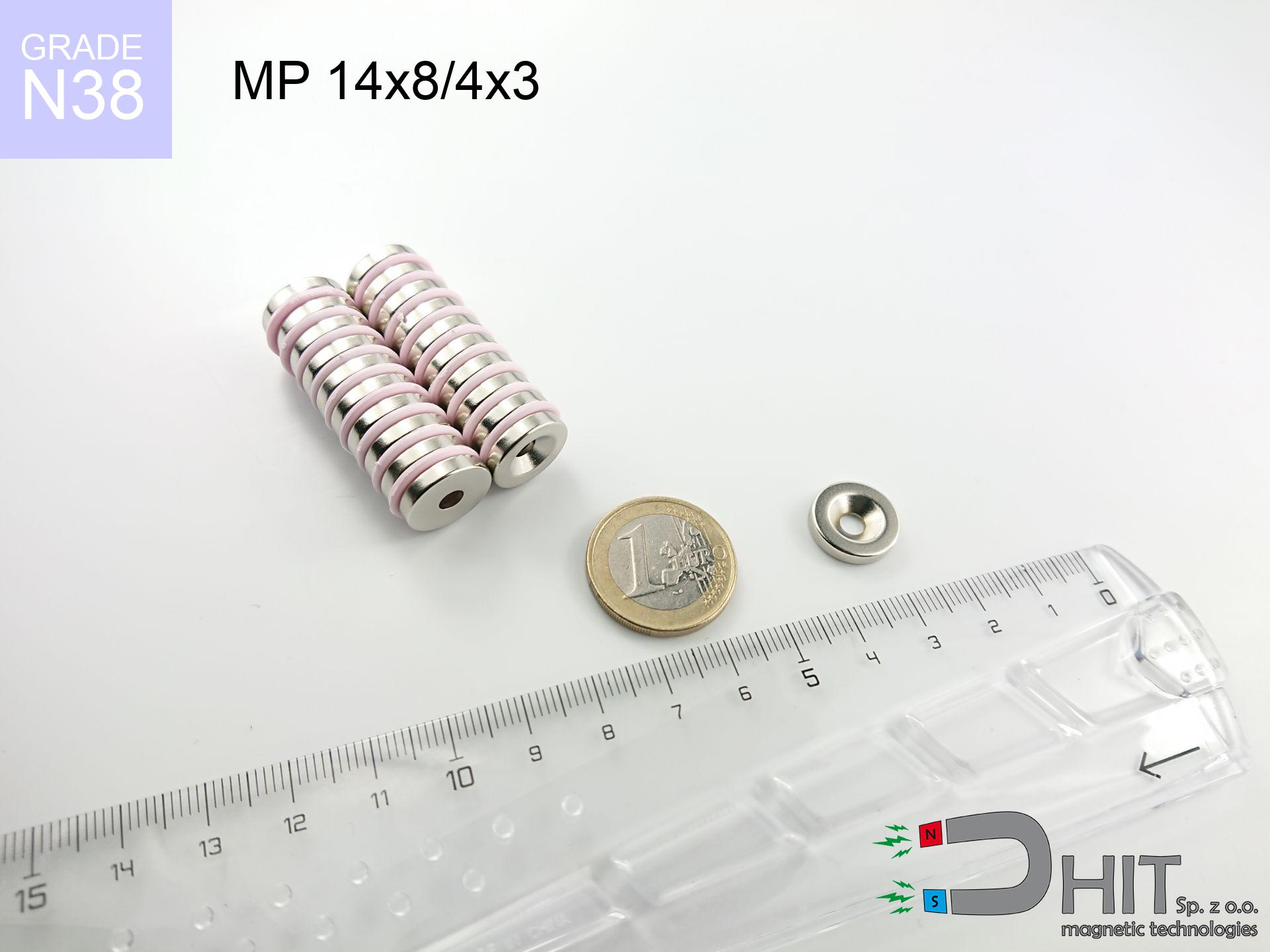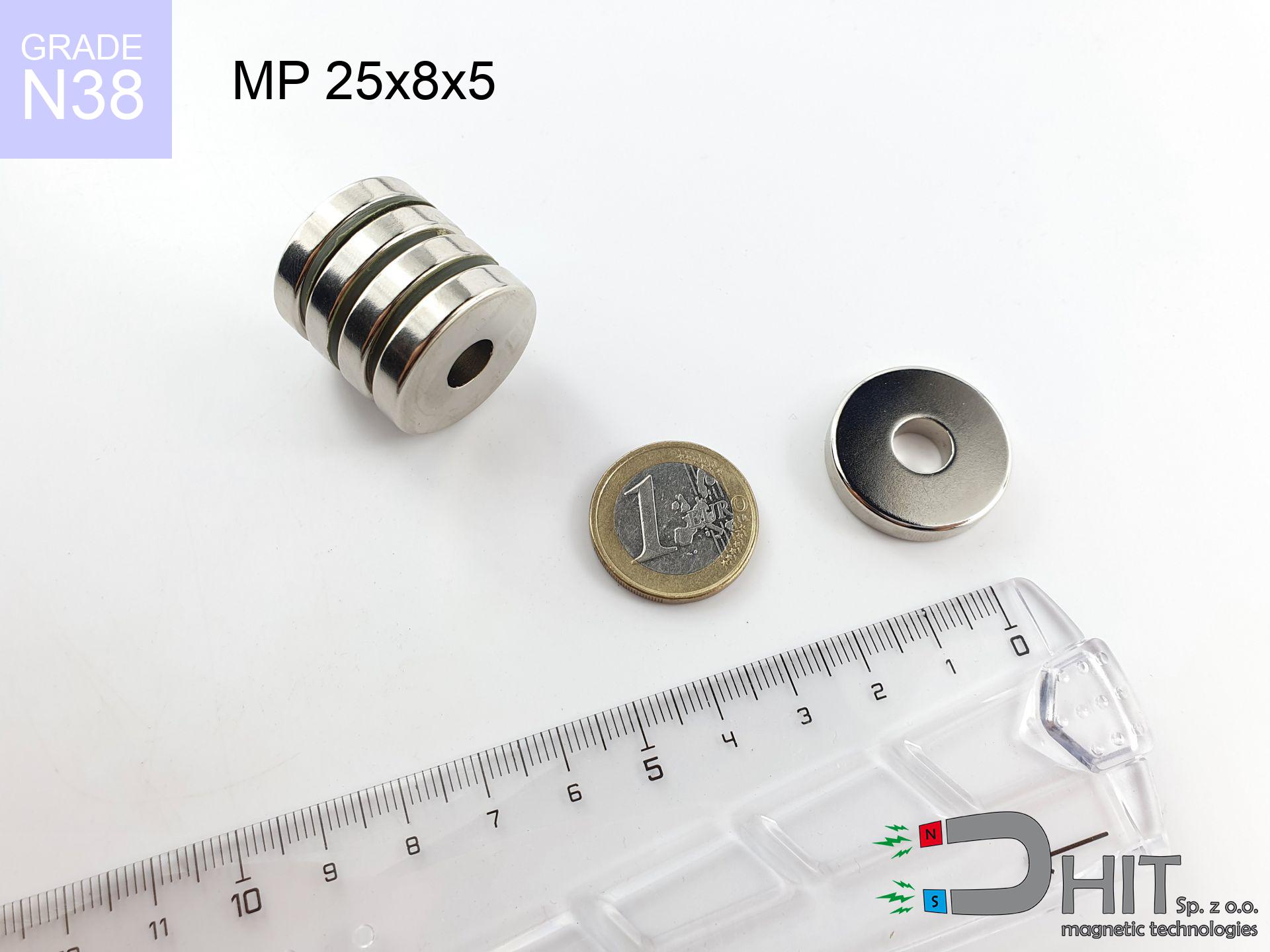SM 25x350 [2xM8] / N52 - magnetic separator
magnetic separator
Catalog no 130355
GTIN/EAN: 5906301813033
Diameter Ø
25 mm [±1 mm]
Height
350 mm [±1 mm]
Weight
1360 g
Magnetic Flux
~ 9 500 Gauss [±5%]
1057.80 ZŁ with VAT / pcs + price for transport
860.00 ZŁ net + 23% VAT / pcs
bulk discounts:
Need more?
Call us now
+48 888 99 98 98
alternatively send us a note by means of
our online form
our website.
Lifting power as well as structure of a magnet can be analyzed with our
magnetic calculator.
Orders submitted before 14:00 will be dispatched today!
Technical parameters of the product - SM 25x350 [2xM8] / N52 - magnetic separator
Specification / characteristics - SM 25x350 [2xM8] / N52 - magnetic separator
| properties | values |
|---|---|
| Cat. no. | 130355 |
| GTIN/EAN | 5906301813033 |
| Production/Distribution | Dhit sp. z o.o. |
| Country of origin | Poland / China / Germany |
| Customs code | 85059029 |
| Diameter Ø | 25 mm [±1 mm] |
| Height | 350 mm [±1 mm] |
| Weight | 1360 g |
| Material Type | Stainless steel AISI 304 / A2 |
| Magnetic Flux | ~ 9 500 Gauss [±5%] |
| Size/Mount Quantity | 2xM8 |
| Polarity | circumferential - 13 poles |
| Casing Tube Thickness | 1 mm |
| Manufacturing Tolerance | ±1 mm |
Magnetic properties of material N52
| properties | values | units |
|---|---|---|
| remenance Br [min. - max.] ? | 14.2-14.7 | kGs |
| remenance Br [min. - max.] ? | 1420-1470 | mT |
| coercivity bHc ? | 10.8-12.5 | kOe |
| coercivity bHc ? | 860-995 | kA/m |
| actual internal force iHc | ≥ 12 | kOe |
| actual internal force iHc | ≥ 955 | kA/m |
| energy density [min. - max.] ? | 48-53 | BH max MGOe |
| energy density [min. - max.] ? | 380-422 | BH max KJ/m |
| max. temperature ? | ≤ 80 | °C |
Physical properties of sintered neodymium magnets Nd2Fe14B at 20°C
| properties | values | units |
|---|---|---|
| Vickers hardness | ≥550 | Hv |
| Density | ≥7.4 | g/cm3 |
| Curie Temperature TC | 312 - 380 | °C |
| Curie Temperature TF | 593 - 716 | °F |
| Specific resistance | 150 | μΩ⋅cm |
| Bending strength | 250 | MPa |
| Compressive strength | 1000~1100 | MPa |
| Thermal expansion parallel (∥) to orientation (M) | (3-4) x 10-6 | °C-1 |
| Thermal expansion perpendicular (⊥) to orientation (M) | -(1-3) x 10-6 | °C-1 |
| Young's modulus | 1.7 x 104 | kg/mm² |
Table 1: Rod construction
SM 25x350 [2xM8] / N52
| Parameter | Value | Description / Unit |
|---|---|---|
| Diameter (Ø) | 25 | mm |
| Total length | 350 | mm (L) |
| Active length | 314 | mm |
| Section count | 13 | modules |
| Dead zone | 36 | mm (2x 18mm starter) |
| Weight (est.) | ~1306 | g |
| Active area | 247 | cm² (Area) |
| Housing material | AISI 304 | 1.4301 (Inox) |
| Surface finish | Ra < 0.8 µm | Polished |
| Temp. class | 80°C | Standard (N) |
| Force loss (at max °C) | -12.8% | Reversible loss (physics) |
| Force (calculated) | 22.6 | kg (theor.) |
| Induction (surface) | ~9 500 | Gauss (Max) |
Chart 2: Field profile (13 sections)
Chart 3: Temperature performance
Material specification
| iron (Fe) | 64% – 68% |
| neodymium (Nd) | 29% – 32% |
| boron (B) | 1.1% – 1.2% |
| dysprosium (Dy) | 0.5% – 2.0% |
| coating (Ni-Cu-Ni) | < 0.05% |
Sustainability
| recyclability (EoL) | 100% |
| recycled raw materials | ~10% (pre-cons) |
| carbon footprint | low / zredukowany |
| waste code (EWC) | 16 02 16 |
Other proposals
Strengths and weaknesses of rare earth magnets.
Pros
- They do not lose power, even after nearly 10 years – the reduction in power is only ~1% (based on measurements),
- They are extremely resistant to demagnetization induced by external field influence,
- In other words, due to the metallic finish of silver, the element becomes visually attractive,
- Magnetic induction on the working layer of the magnet is impressive,
- Due to their durability and thermal resistance, neodymium magnets are capable of operate (depending on the shape) even at high temperatures reaching 230°C or more...
- Due to the option of accurate forming and adaptation to unique solutions, neodymium magnets can be modeled in a variety of shapes and sizes, which expands the range of possible applications,
- Huge importance in modern technologies – they are used in magnetic memories, electric drive systems, precision medical tools, also technologically advanced constructions.
- Relatively small size with high pulling force – neodymium magnets offer impressive pulling force in tiny dimensions, which enables their usage in small systems
Disadvantages
- They are fragile upon heavy impacts. To avoid cracks, it is worth protecting magnets using a steel holder. Such protection not only protects the magnet but also improves its resistance to damage
- We warn that neodymium magnets can reduce their power at high temperatures. To prevent this, we recommend our specialized [AH] magnets, which work effectively even at 230°C.
- Due to the susceptibility of magnets to corrosion in a humid environment, we advise using waterproof magnets made of rubber, plastic or other material stable to moisture, when using outdoors
- Limited ability of producing threads in the magnet and complicated forms - preferred is a housing - mounting mechanism.
- Possible danger resulting from small fragments of magnets can be dangerous, in case of ingestion, which gains importance in the aspect of protecting the youngest. It is also worth noting that small elements of these magnets are able to complicate diagnosis medical after entering the body.
- Higher cost of purchase is one of the disadvantages compared to ceramic magnets, especially in budget applications
Lifting parameters
Maximum lifting force for a neodymium magnet – what it depends on?
- with the contact of a yoke made of special test steel, guaranteeing maximum field concentration
- whose transverse dimension is min. 10 mm
- with an ground contact surface
- under conditions of no distance (metal-to-metal)
- for force acting at a right angle (pull-off, not shear)
- at ambient temperature approx. 20 degrees Celsius
Practical aspects of lifting capacity – factors
- Clearance – existence of any layer (paint, tape, gap) acts as an insulator, which lowers capacity rapidly (even by 50% at 0.5 mm).
- Load vector – highest force is reached only during pulling at a 90° angle. The shear force of the magnet along the surface is standardly several times smaller (approx. 1/5 of the lifting capacity).
- Wall thickness – thin material does not allow full use of the magnet. Magnetic flux penetrates through instead of generating force.
- Steel grade – ideal substrate is pure iron steel. Cast iron may have worse magnetic properties.
- Surface finish – ideal contact is possible only on polished steel. Any scratches and bumps create air cushions, weakening the magnet.
- Thermal environment – temperature increase causes a temporary drop of force. It is worth remembering the maximum operating temperature for a given model.
Holding force was checked on the plate surface of 20 mm thickness, when the force acted perpendicularly, whereas under shearing force the load capacity is reduced by as much as fivefold. Additionally, even a small distance between the magnet’s surface and the plate reduces the lifting capacity.
Precautions when working with neodymium magnets
Data carriers
Intense magnetic fields can corrupt files on credit cards, hard drives, and other magnetic media. Keep a distance of at least 10 cm.
Compass and GPS
Remember: rare earth magnets produce a field that confuses sensitive sensors. Keep a safe distance from your mobile, tablet, and navigation systems.
Dust is flammable
Combustion risk: Neodymium dust is highly flammable. Do not process magnets without safety gear as this may cause fire.
Physical harm
Protect your hands. Two large magnets will snap together immediately with a force of several hundred kilograms, destroying anything in their path. Be careful!
Magnet fragility
Watch out for shards. Magnets can explode upon uncontrolled impact, launching shards into the air. We recommend safety glasses.
Skin irritation risks
Certain individuals suffer from a sensitization to Ni, which is the typical protective layer for NdFeB magnets. Prolonged contact can result in dermatitis. It is best to use safety gloves.
Respect the power
Before starting, read the rules. Sudden snapping can break the magnet or injure your hand. Think ahead.
Choking Hazard
Adult use only. Small elements pose a choking risk, leading to severe trauma. Store out of reach of children and animals.
Pacemakers
Life threat: Neodymium magnets can turn off heart devices and defibrillators. Do not approach if you have electronic implants.
Do not overheat magnets
Regular neodymium magnets (grade N) lose magnetization when the temperature goes above 80°C. This process is irreversible.

![Separation magnetic rod SM 25x350 [2xM8] / N52 Separation magnetic rod SM 25x350 [2xM8] / N52](https://cdn3.dhit.pl/graphics/banners/magnet.webp)
![SM 25x350 [2xM8] / N52 - magnetic separator](https://cdn3.dhit.pl/graphics/products/sm-25x350-2xm8-geb.jpg)





